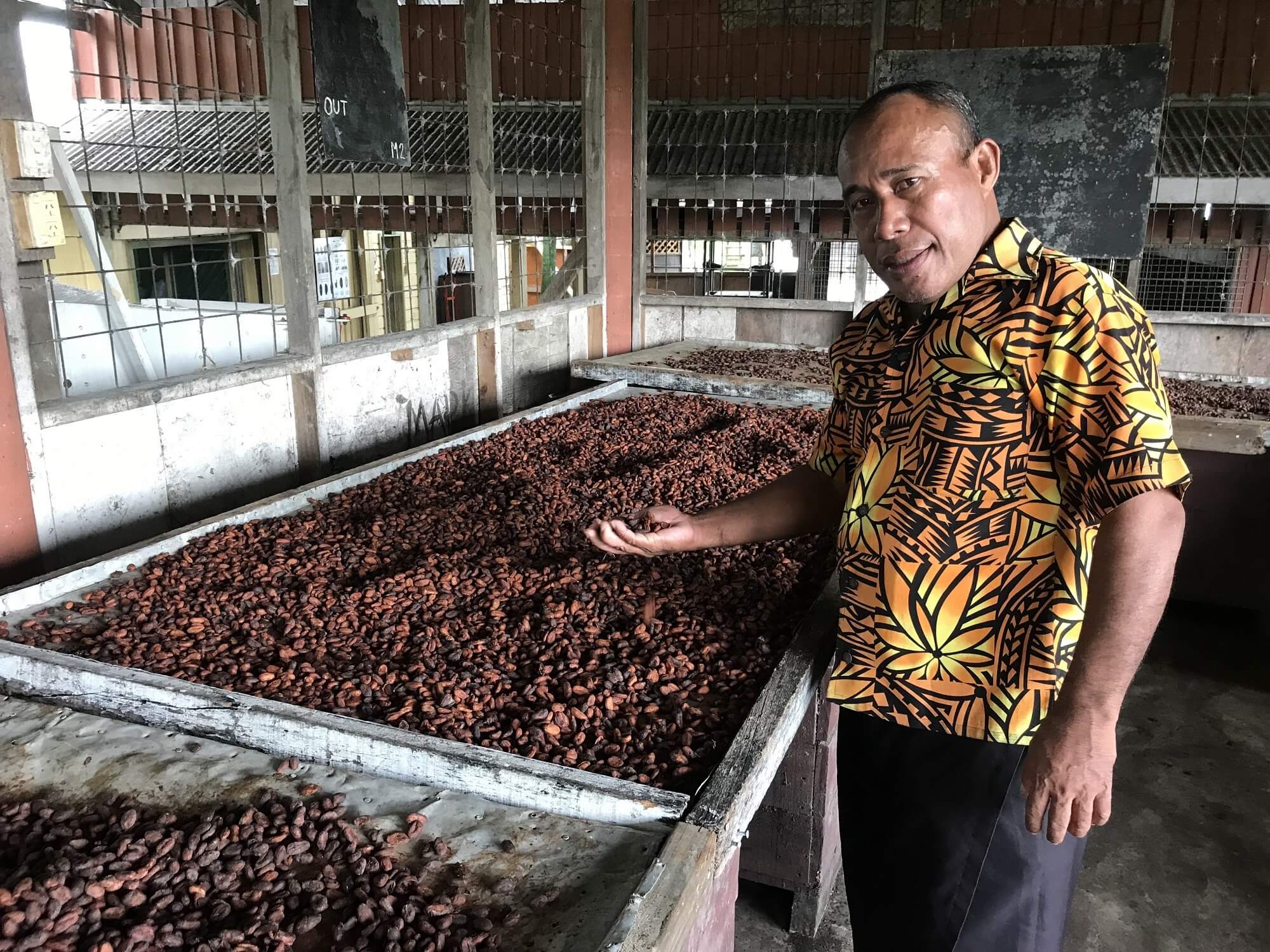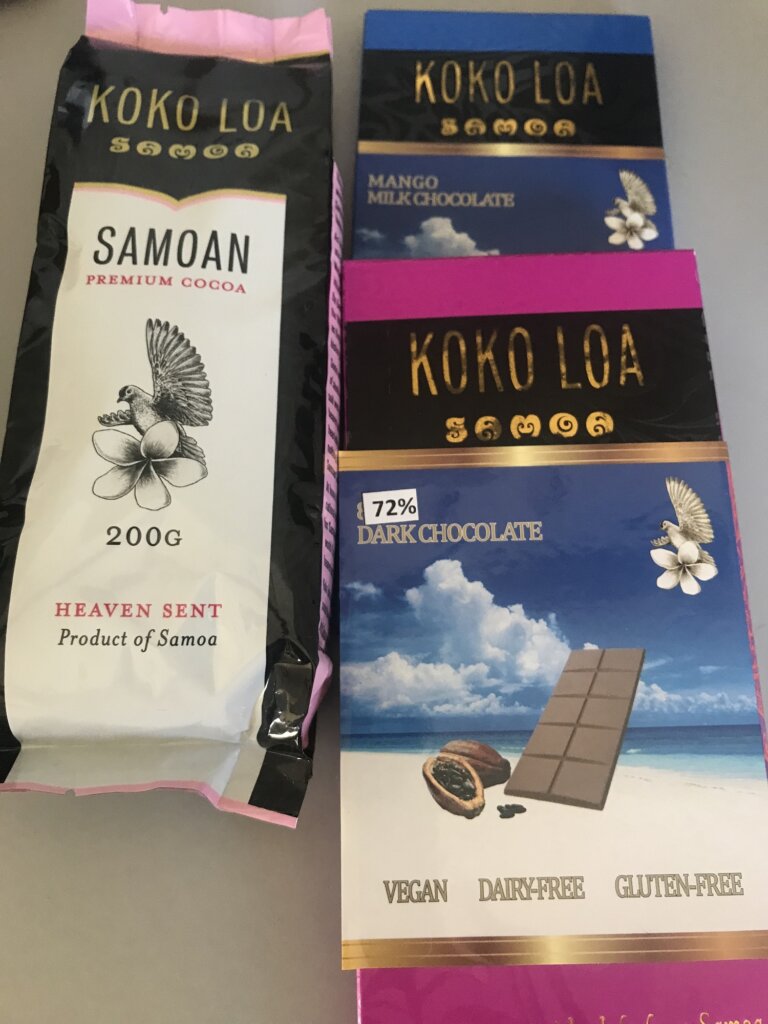Dine
Drink Up!
For a mere 15 years, Germany controlled Samoa, but left an enduring liquid legacy. Words and photographs by Gillian Vine
February 10, 2024
Pacific Island Living
February 10, 2024Samoa’s German Legacy
Skip the cornflakes and eat sweet koko rice for breakfast, then drink a cup of excellent local coffee in one of Apia’s many cafés.
These simple pleasures are a legacy of 19th century colonial imperialism, when Germany ruled Samoa (then Western Samoa). The sole German colony in the Pacific, the country was acquired in 1899 under a deal with the United States and Britain, the US getting the eastern islands (now American Samoa) and the Brits other parts of the Pacific. The German administrator got a great perk: his headquarters were Vailima, the former home of Scots-born writer Robert Louis Stevenson. These days, Vailima is a museum and well worth a visit.
THE NEW ZEALAND TAKEOVER
The Germans lost their colony when, in 1914 at the start of World War 1, New Zealand staged an unopposed takeover, remaining involved in the country’s administration until Samoa’s independence in 1962.
About 50 years before the official German annexation, Samoa had been a lucrative source of European income from the copra, cacao (cocoa beans) and rubber they planted. Rubber appears to have flopped and the coffee they introduced was not a commercial success until the 1930s.
Cocoa was a hit with Samoans, who found the tropical evergreen (Theobroma cacao) easy to grow at home, alongside coconuts, mangoes and jackfruit. They gave the beans a local twist, drying and grinding them then pressing into blocks of “koko”. It was prepared by taking chunks, adding hot water and serving.
The first time I tried koko, about 25 years ago, my hosts made it in a large teapot and added sweetened condensed milk to the brew before it was poured. To avoid the gritty residue, it was important not to drain one’s cup but no one told me, so I ended up with a mouthful of grounds.
Another unique use of koko is as a flavouring for rice in coconut milk, making a delicious breakfast dish.
THE WHITTAKER CONNECTION
Cocoa might have remained a quirky sideline had it not been for the likes of James Whittaker (1848-1967), a New Zealand chocolate maker, who bought beans from Samoan grower Vaii Salemoa. The connection between the two families was renewed a few years ago and Whittaker’s has helped establish Samoa Cocoa Export Improvement Programme on Samoa’s “big island”, Savai’i.
At the programme’s factory, Nu’u Faamatala explains that the main varieties grown here are Almondado and Criollo, the latter a rarity and considered the best cacao, while Almondado is the most common worldwide.
“We are encouraging local farmers, especially young peo ple, to plant more cacao and we give them plants,” Nu’u says.
After a slump when plantations were destroyed by a cyclone in the 1960s, there are now 300 farmers, so the industry is growing. Crops can be harvested three times a year and pods are taken to the facility where Nu’u is based to be split, beans sorted, fermented, dried and bagged for export. He splits a pod and gives me a bean to suck, saying the white coating is regarded as a sweet. “Just don’t bite the bean,” he says.
KOFE TIME
Back on the main island, Upolu, it’s time for coffee – “kofe” in Samoan – at the 56ha Betham Plantation, inland from the capital, Apia.
“This has been in my dad’s family since 1937,” says Les Betham, adding that this area has been a coffee-growing centre for about a century.
“There’s an old German coffee mill down the road that operated from the 1930s to the ’60s,” he says.
In 1994, Les’ father (now in his 80s) planted robusta coffee
– “It will grow anywhere, unlike arabica which needs higher altitudes” – because he thought the crop would fit well with the koko and coconuts he already grew. With his sister, Precilla, Les now runs the company producing Aleisa coffee, mainly for the local market but with an eye to exporting to New Zealand, where they have both lived.

OVINE WEEDEATERS
The biggest issue for the Bethams is weeds. Like coffee, pest plants love Samoa’s rich volcanic soil and ample rainfall. Earlier this year, after employing six men with machetes to hack back the growth under the hundreds of coffee trees, Les decided to take an eco-approach and bought some sheep for weed eaters. Boss Aries is a ram with impressive horns that gives me an ovine glare before he returns to his chomping. Les’s idea is clearly working.
Coffee berries are picked when red and because they don’t ripen all at once, “we visit each tree maybe three or four times”. A week after the annual harvest ends, the trees flower, the white blooms emitting a sweet, jasmine-like scent.
Dried, roasted and ground onsite, Aleisa coffee is popular with locals and visitors, who drink it in Apia’s cafés and buy packets to take home.
The Germans have left Samoa a legacy that is giving koko and kofe farmers an increasingly important place in world horticulture.
© 2024 Pacific Island Living Magazine all Rights Reserved
Website by Power Marketing